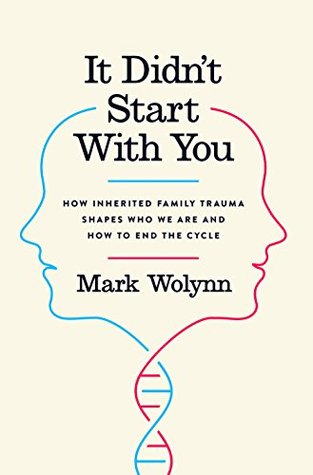More on this book
Community
Kindle Notes & Highlights
by
Mark Wolynn
Read between
March 25 - April 3, 2024
In other words, we’re likely to keep repeating our unconscious patterns until we bring them into the light of awareness. Both Jung and Freud noted that whatever is too difficult to process does not fade away on its own but, rather, is stored in our unconscious.
Viewed in this way, the traumas we inherit or experience firsthand can not only create a legacy of distress, but also forge a legacy of strength and resilience that can be felt for generations to come.
Among the numerous genes affected by stress are the CRF1 (corticotropin-releasing hormone receptor) and CRF2 genes. Increased levels of these genes have been observed in people who have depression and anxiety.
However, many intangibles also enter into the equation and can influence how deeply entrenched family traumas remain. These intangibles include self-awareness, the ability to self-soothe, and having a powerful internal healing experience.
“Filling our minds with positive images of wellbeing,” he says, “can produce an epigenetic environment that reinforces the healing process.”9
The intense or urgent words we use to describe our deepest fears—that’s our core language. We can also hear it in the complaints we have about our relationships, our health, our work, and other life situations. Core language is even revealed in the way we’ve disconnected from our bodies, and from the core of ourselves. Essentially, it’s the fallout from trauma that has occurred in our early childhood or family history.
It’s important to restate: not all behaviors expressed by us actually originate from us. They can easily belong to family members who came before us. We can merely be carrying the feelings for them or sharing them. We call these “identification feelings.”
The emotional charge contained in your core descriptors can function like a barometer to gauge the healing that still needs to take place. Generally, the stronger the negative charge, the clearer the direction for healing. You are looking for words that contain a significant emotional charge.
As the movement began to calm her, she told herself: “I’ll never leave you when you’re feeling alone and afraid. Instead, I’ll place my hand here and breathe with you until you feel calm again.” After one session, Kelly stopped pulling out her hair.
Just as Dan and Nancy each experienced their wounds mirrored and magnified by the other, we too can look to our partners to reflect what we bring unfinished from our family histories. The map is already inside us. Its pathways may be shrouded in darkness, yet we can often rely on our partners to provide us with the light to see.


